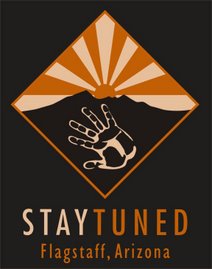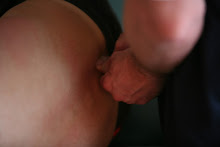Thursday, November 26, 2009
Sunday, June 28, 2009
What is Myoskeletal Alignment?
From Erik Dalton, PhD, founder of Freedom From Pain Institute, creator of Myoskeletal Alignment Techniques.
What makes MAT Special?
Well-documented theories explain how joints become fixated from myofascial stressors; yet relatively unknown in the massage therapy community is how joint dysfunction creates protective muscle spasm and dysfunctional strain patterns, such as forward head postures, slumped shoulders and scoliosis. This reflexogenic relationship between muscles and joints is the foundation of the Myoskeletal Alignment Technique and is considered not only uniquely different from traditional thinking, but possibly an important next step in addressing abnormal strain patterns caused by muscle/joint imbalances.
Massage therapists can now safely address all soft tissues, including ligaments, nerve dura, fasciae, discs and joint capsules, responsible for much of the pain previously blamed on muscles alone. Osteopathic methods, such as muscle energy, strain-counter strain and mechanical link, are also designed to relieve muscle/joint dysfunctions, but the MAT method complements today’s bodywork practices as it was specifically designed to fit a massage-therapy format.
One distinguishing goal that establishes the MAT method apart from other techniques is its dependence on identification and correction of joint fixations. This is accomplished by systematically releasing deep spinal muscles, ligaments and fibrotic joint capsules that torsion and compress spinal joints. In some cases, a bodyworker may apply direct pressure to bones to release fibrotic muscles that create joint blockages, but the intent is always soft-tissue work.
Posture’s Roll
Most manual therapists today agree that no therapeutic approach to neck/back pain is complete unless body posture is generally improved. Whatever the root of the client’s condition, special attention must be dedicated to posture-especially the correct positioning of the pelvis. Many therapists complain that postural assessments are often too complex, too time-consuming, too clumsy-in a typical massage setting with the client draped.
The MAT method lessens assessment anxiety with an efficient five-minute hands-on evaluation that quickly identifies gross body asymmetries, such as pelvic tilts, short legs, sacroiliac dysfunctions, scoliosis, facet restrictions and hip-capsule adhesions. MAT also incorporates Vladimir Janda, M.D.’s upper-and-lower crossed visual assessment method for easy recognition of muscle-imbalance patterns that cause neck and low-back pain. Combining these hands-on and visual assessment techniques allows the therapist to immediately tell which muscles are tight and pulling unevenly on the body’s bony framework, and which weak muscles are permitting the asymmetry. Janda’s muscle-imbalance research has gifted bodywork practitioners with a remarkably useful model for explaining how predictable muscle imbalances cause predictable faulty postural patterns, such as slumped shoulders, forward heads, swaybacks and dowager’s hump. (Hands on procedures using Janda’s formula are detailed in Part II of this series.)
Ultimately, for long-lasting relief of chronic neck/back pain, the MAT system works to achieve these goals:
balancing the head on the neck
balancing the neck on the shoulders
balancing the shoulder girdle on the rib cage
balancing the pelvis on the femurs
restoring pain-free movement
Recent studies have confirmed a noticeable reduction in noxious neural input entering the spinal cord and brain when the postural goals listed above are met. In 1979, biomechanical researcher J. Gordon Zink, D.O., coined the term “common compensatory patterns” to describe routinely found postural patterns in the neuromyofascial-skeletal system. His studies were the first to validate how structure and function play a dual role in posturally initiated pain syndromes. Eventually, he concluded that postural muscle stress leads to chronic, recurrent central nervous system irritation initiated by sensory receptors, such as mechanoreceptors, nociceptors and chemoreceptors.
Postural muscles are structurally designed to resist fatigue and function in the presence of prolonged gravitational exposure. If their capacity to resist stress is lost, the postural muscles become irritable, tight and shortened. Fortunately, as balance and function are re-established in distorted myofascial structures, hyperactivity in agitated joint and muscle receptors rapidly dissipates. Zink’s conclusion leads to the underpinnings of the client’s outcome: less sympathetic muscle spasm, less limbic system activation, less stress-and less pain.
Thursday, April 9, 2009
High Altitude Sports Massage
This type of massage and bodywork includes techniques I have studied with Jon Hart from the East West College of Healing Arts in Portland, OR, as well as Leon Chaitow from the UK, and modified techniques from Erik Dalton's Myoskeletal Alignment.
The work often looks very similar to deep tissue massage, the difference is the intent has shifted. We may do the same work to bring back the head over the shoulders, to defeat some of the painful effects of gravity, at the same time releasing the upper chest breathing pattern, allowing for more abdominal breathing.
Specific techniques are then recommended for the client to take home. Breathing pattern re-education, get into some breathing classes, get some tapes, etc. Just pay attention to how breathing makes you feel?
Athletes training at altitude often call on the low back muscle to expel the breath in labored breathing. If there happens to be an overload on this muscle due to a contralateral (opposite side) inhibition of glute medius/minimus, this will add extra strain in to said low back. Catch my drift, so we look at the system of breathing, where I live, as a potential pain generator as well.
Until next time...Stay Tuned.
Tuesday, March 10, 2009
Massage: It's real medicine
POSTED: 9:48 a.m. EST, March 8, 2007
By Kristyn Kusek Lewis
Having your honey rub your back is sweet, but it's tough to compete with the hands of a pro. A good massage therapist can make you feel like a new person. And now research suggests massage can ease insomnia, boost immunity, prevent PMS, and more. Maybe that's why hospitals are making it a standard therapy.
"All of our surgery patients are offered the treatment -- I call it 'service with a smile' -- and it's a mandatory weekly prescription I give myself," says Mehmet C. Oz, M.D., director of the Cardiovascular Institute at New York Presbyterian Hospital--Columbia Presbyterian Medical Center and a member of the board at LLuminari, a health-education company.
Our advice: Enjoy your hands-on time with your sweetie, but set aside some time for a real massage, too. Here are some feel-good reasons:
Goodbye, pain
It sounds like a no-brainer, but rubdowns are especially effective for aches like low-back pain. Researchers at the Group Health Center for Health Studies in Seattle, Washington, found that massage works better than common treatments including chiropractic therapy and acupuncture. It's not clear why, but several studies show massage reduces levels of the stress hormone cortisol while boosting the feel-good hormones serotonin and dopamine. Those changes slow your heart rate, reduce blood pressure, and block your nervous system's pain receptors. Massage also increases blood flow to the muscles, which may help them heal. (Health.com: Frequently asked questions about massageexternal link )
A bonus: Massage also seems to ease distress from migraine, labor pain, and even cancer, as well as the body tenderness seen with fibromyalgia, says Tiffany Field, Ph.D., director of the Touch Research Institute at the University of Miami School of Medicine. Plus, the benefits may last as long as a year after just a few treatments, says Partap Khalsa, Ph.D., a chiropractor and a program officer at the National Institutes of Health's National Center for Complementary and Alternative Medicine, the agency funding many major studies on massage.
Hello, dreams
Fluctuations in several types of brain waves either relax you or wake you up. Massage increases delta waves -- those linked with deep sleep -- according to a study at the Touch Research Institute. That's why it's easy to drift off on the massage table, Field says.
Nice to have you back, brain power
The Touch Research Institute study that connected massage to sleep also found that a 15-minute chair massage boosted alertness. "Subjects reported that it felt like a runner's high," Field says. Tests also show that brain-wave activity stimulated by massage is linked to improved attention.
Take that, colds
Massage helps ward off bugs by boosting your "natural killer cells," the immune system's first line of defense against invading illness. "We know that cortisol destroys natural killer cells," Field says. "Therefore, since massage decreases cortisol, your immune cells get a boost." Massage even seems to boost immunity in those people with severely compromised immune systems, such as breast-cancer patients. (Health.com: Which massage is best for you?external link)
Blues, be gone
Less cortisol and more serotonin and dopamine in your system may also mean less stress, anxiety, and depression. "We know that the right side of the frontal lobe of the brain is more active when we're sad, and the left side's activated when we're happy," Field says. "Our studies have observed that massage decreases activity in the right lobe and increases functioning in the left." The well-being people feel after a massage is a big reason why some hospitals offer it to anxious patients preparing for surgery and cancer patients going through chemo.
Shove off, PMS
A small study of 24 women with severe PMS found that massage reduced symptoms such as pain, water retention, and mood swings. Try it with proven remedies such as exercise (and who-cares-if-they-work solutions like a little dark chocolate).
Visit Stay Tuned Therapeutics in Flagstaff, Arizona at 403 West Birch Ave. We offer deep tissue massage, sports massage, myoskeletal alignment techniques and therapeutic skin and nail care! Call 699-1999 or 699-1801 for more information!!
Monday, February 23, 2009
Thursday, January 29, 2009
Sunday, January 25, 2009
Snowboard Exercises
Get ready to hit the slopes, or if you are feeling weak after the slope hitting, try these simple bits to improve your stamina!
Friday, January 23, 2009
NAU Job Loss

Did ever tell you about the time I was FIRED from the prestigious Northern Arizona University’s Altitude Training Center after 6 years of dedicated service?

